Installation photos of our new public gallery exhibition
Date posted: 11 August 2020
A new exhibition from our permanent collection was installed at the end of June 2020, as part of the biannual rotation of artworks on public display in the Constitutional Court. Works by Dumile Feni, Leonard Matsoso, Kim Berman, Peter Clarke, Amos Miller, Thea Soggot, Velaphi Mzimba, Greg Marinovich, Mikhael Subotzky and Karel Nel are included, amongst others. Various mediums are included, from paintings, prints, photography and sculptures, all speaking to different topics within the CCAC’s overarching theme of art's intersection with justice and humanity.
Photographs by: Francois Lion-Cachet © CCT/CCAC

Thea Soggot, Figure II & Figure II back (2004)
The life-size female forms created by using Magaliesberg earth, an area where some of the oldest hominin fossils have been found, is represented with dignity in that the image is not sexually explicit, yet fragile and intimate. Dignity is conveyed as an ancient value. Installed at the top of the public gallery.
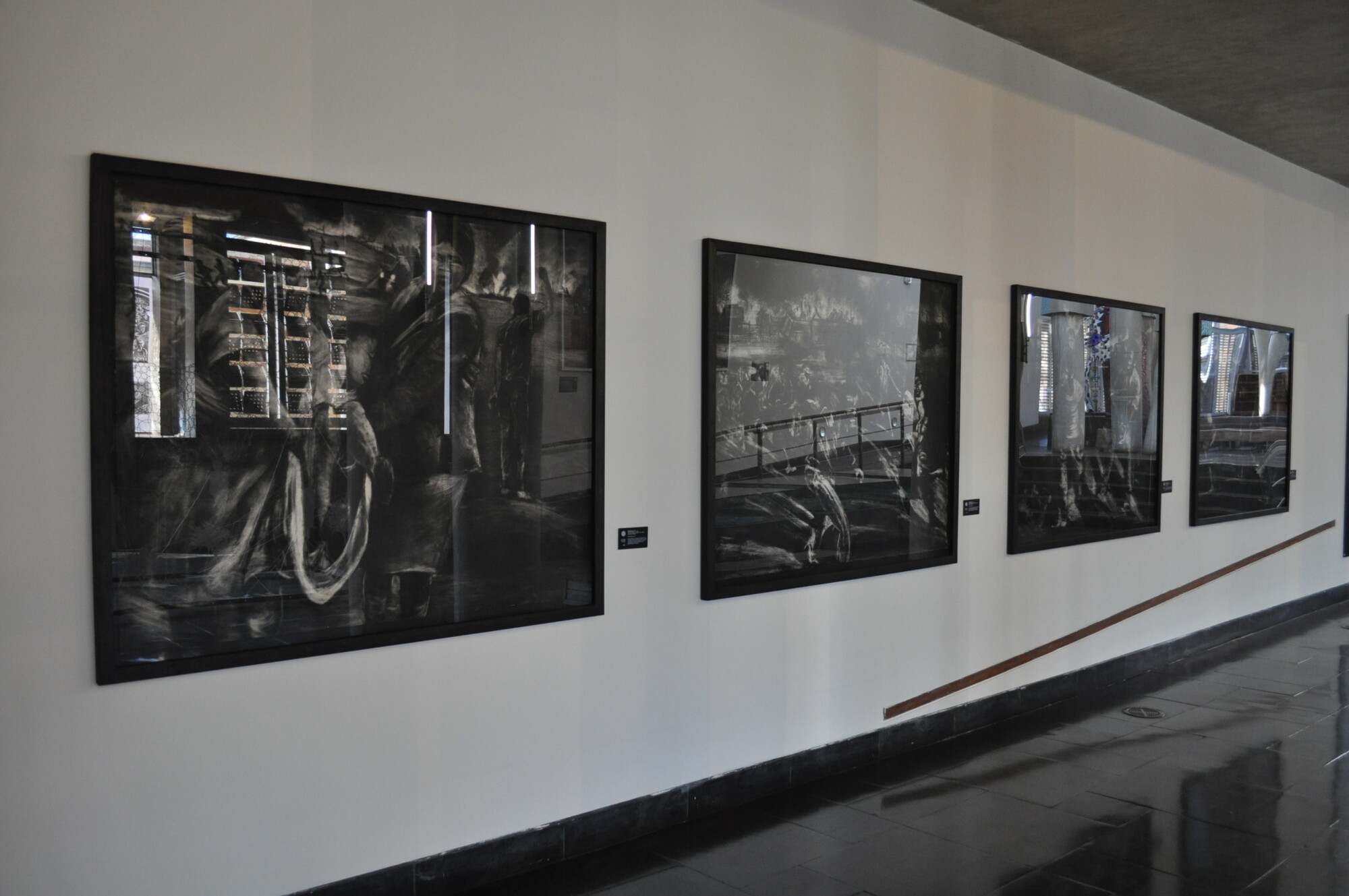
Kim Berman, Alex Under Siege (1998)
This series of eight panels was made at the height of the second State of Emergency, decrying difficult living conditions in Alexandra township, whilst the artist was working for the ANC-aligned organisation Fund for a Free South Africa.
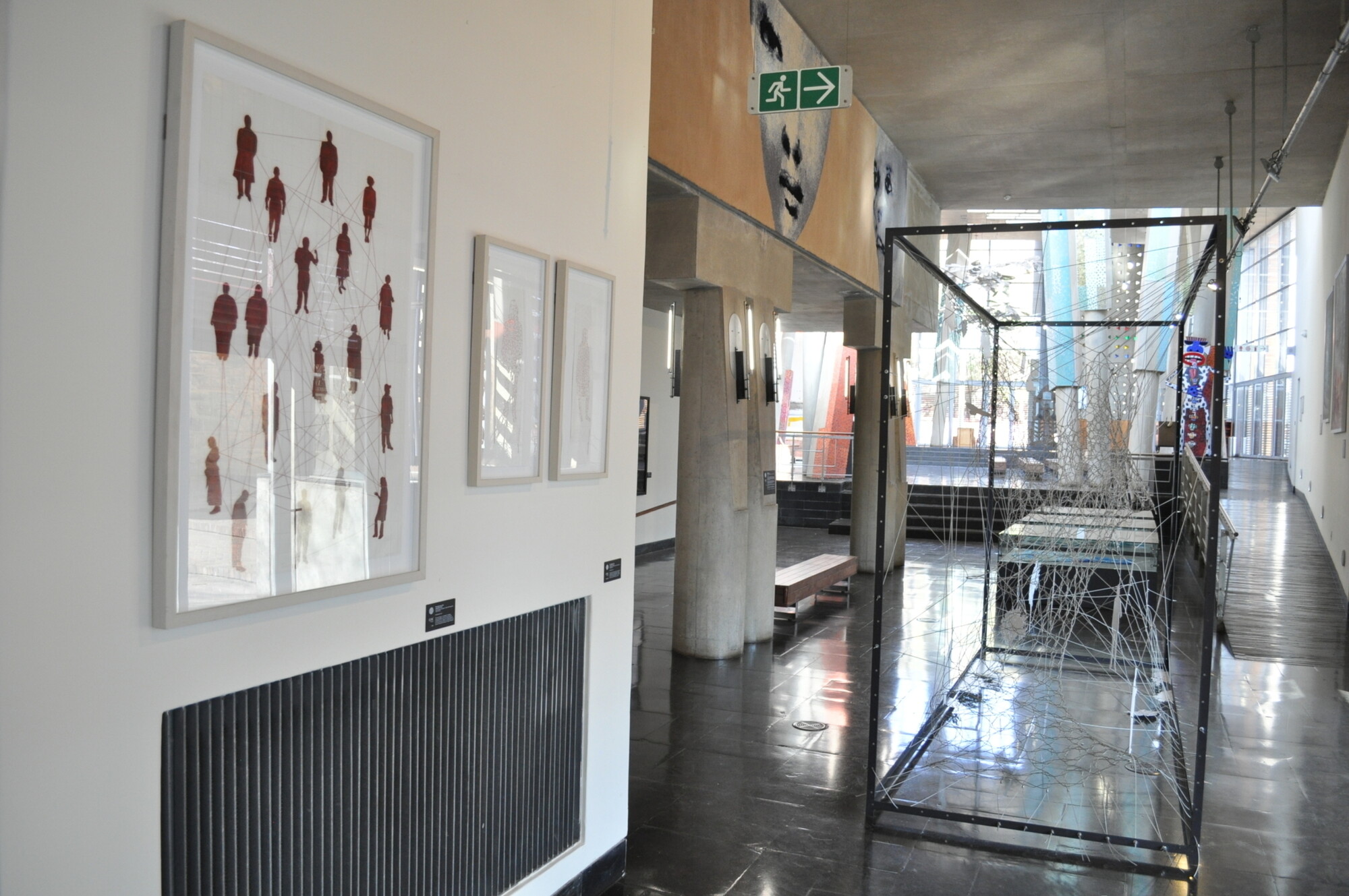
Kim Lieberman, Constellations (2008), Connected (2008)and Landscape of the Court (2016/2020)
Constellations depicts a "constellation" of eighteen, interconnected figures who have moved through the Constitutional Court. Though some of these people may have more prominent positions in society than others, one can never fully measure the impact of a single, ordinary life. In Connected the red silk thread reminds of the lines drawn between constellations of stars and everything being connected in even the smallest of ways. The figures’ shapes are based on the artist and her husband, although they are not meant to represent any particular individual but every person. The artist's sculpture Landscape of the Court is on loan to the CCAC, after having been installed between March and July.
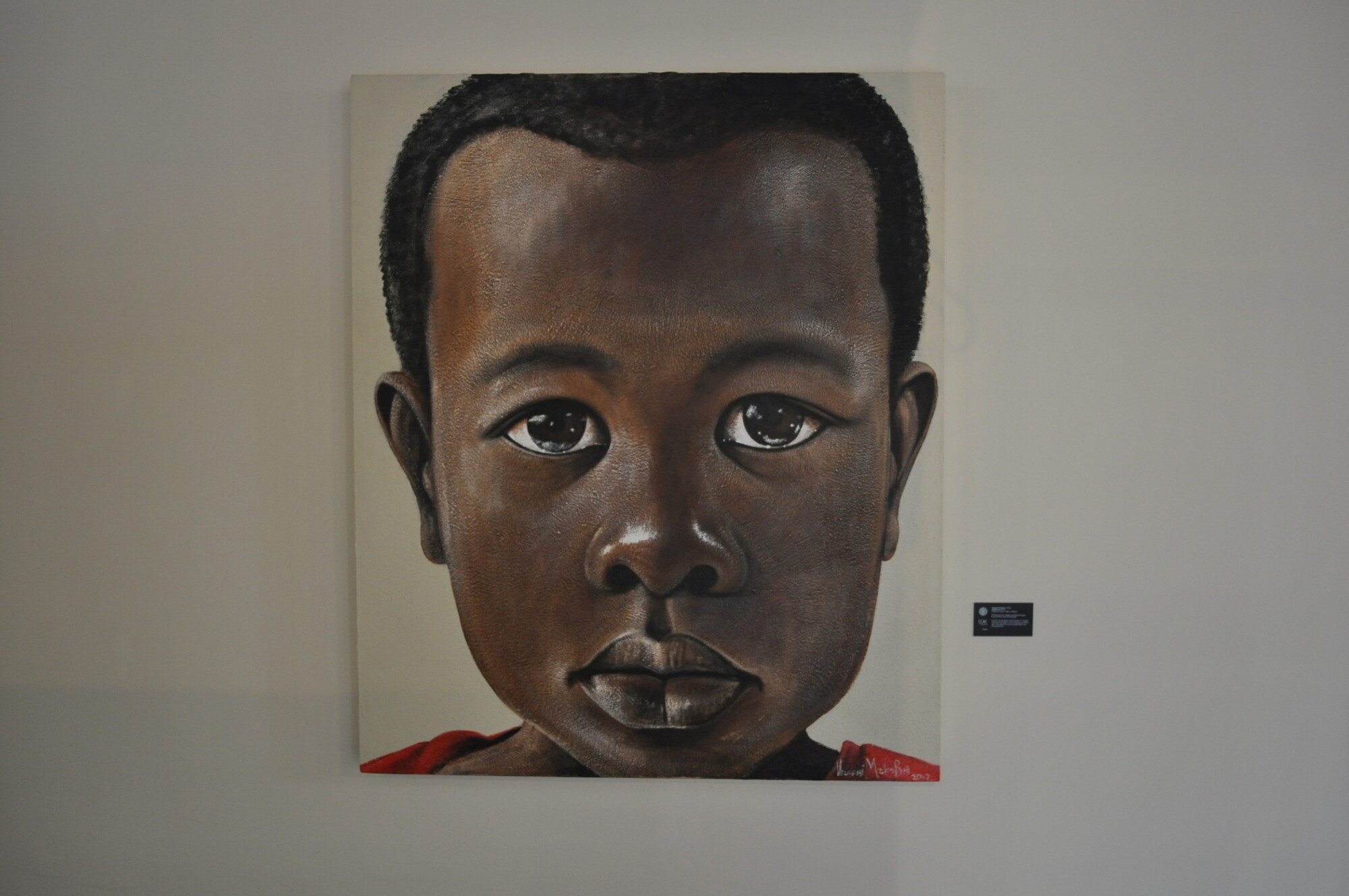
Velaphi Mzimba, Mthokozisi (2017)
A gift from the grandchildren of the late Justice T.L. Skweyiya honoring their grandfather and his championing of children’s rights in the judgments he wrote and handed down in the Constitutional Court. Installed in the photo gallery.

Select works by Greg Marinovich (1962-)
Photographs from the series "The Dead Zone" which shows a wide-ranging visual history of the internecine conflicts and violent strife that engulfed large parts of South Africa in the 1990s, showing the transition from apartheid to democracy. Installed in the photo gallery.

Jürgen Schadeberg, Sharpeville Funeral (1960)
On 21 March 1960, 69 people were killed in Sharpeville, when police opened fire at a peaceful pass laws protest. The artist chartered a plane to photograph to photograph their funeral - he felt this was the best way to show the magnitude of the event. In December 1996, then-president Nelson Mandela signed the new Constitution into law in Sharpeville. Installed in the photo gallery.
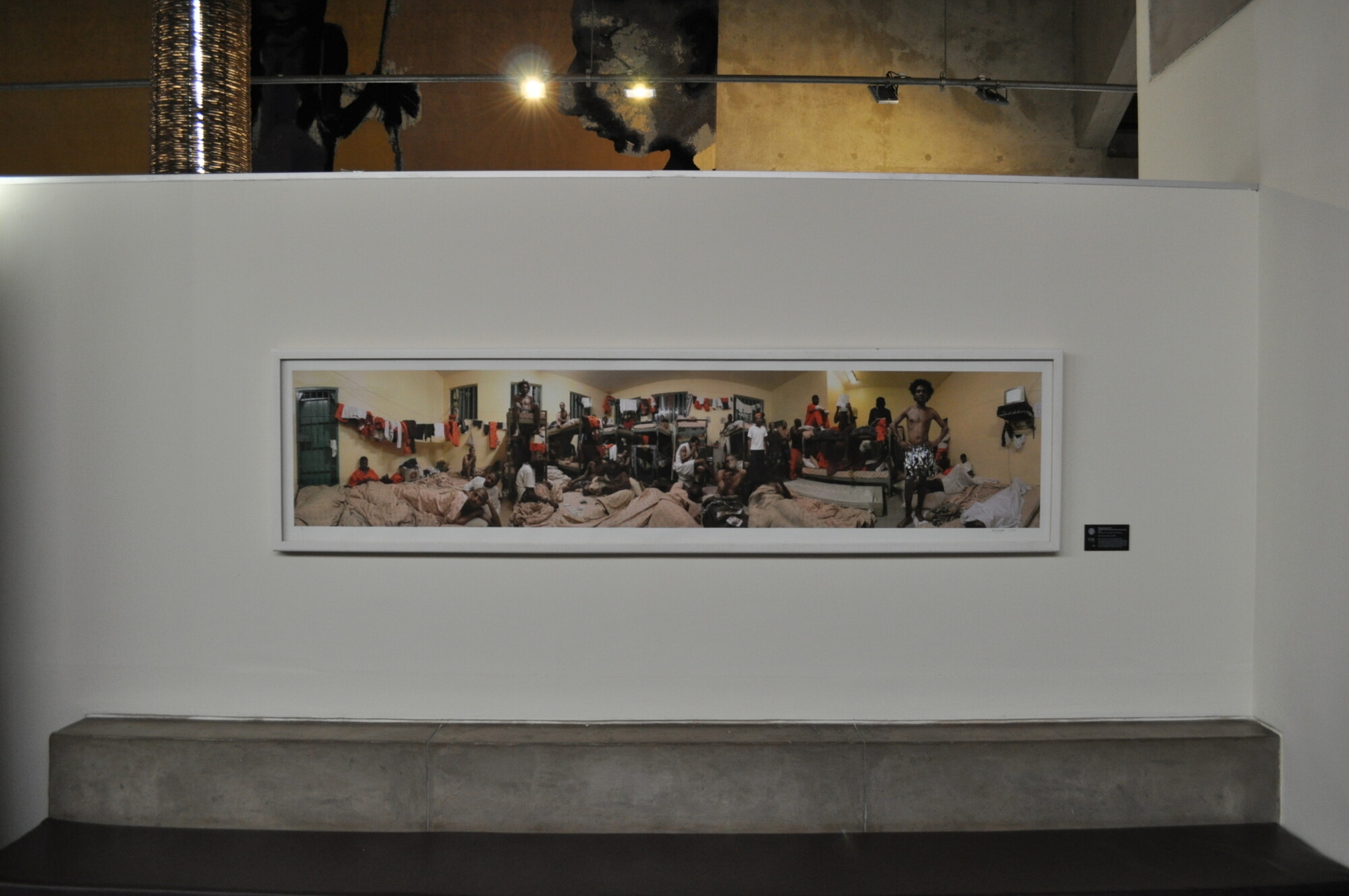
Mikhael Subotzky, Cell 508; A Section; Pollsmoor Maximum Prison (2004)
This work forms part of the series Die Vier Hoeke (The Four Corners) – gang terminology for a prison space where different rules from the outside world apply. It offers a look inside South African prisons, documenting the lives of a community often forgotten by society, where violence and overcrowding in dire conditions are prevalent. Installed in the photo gallery.

Larry Scully, Destruction of District Six (1972)
The artist documented the changing landscape of apartheid South Africa in the 1970s, taking photographs of the demolition of District Six, and the forced removal of its residents, to make way for white settlement in the center of Cape Town. While not overtly political, Scully’s photographs capture injustices against humanity.

Peter Clarke, The Trojan Horse (1990)
In October 1985, a South African Railways truck filled with armed police drove into the center of a youth protest in Athlone and opened fire. The covert attack resulted in the death of three young people aged 11, 15 and 21, and became known as the Trojan Horse Massacre.

Dave Southwood, Neo-natal Clinic, Esselen Street, April 2014 (2014)
Hours before dawn, pregnant women begin queuing outside this clinic in Hillbrow, Johannesburg. Many are HIV positive. Clinics have made South Africa’s anti-retroviral roll-out possible, helping to prevent mother-to-child transmission of the virus by providing neonatal care. This photograph forms part of the artist's book Bill of Rights. Installed in the photo gallery.
Photograph by: Charles Mamorobela © CCT/CCAC

Amos Miller, Nelson Mandela in New York (1990)
The painting was newly framed following its recent restoration treatment. Installed in the photo gallery.
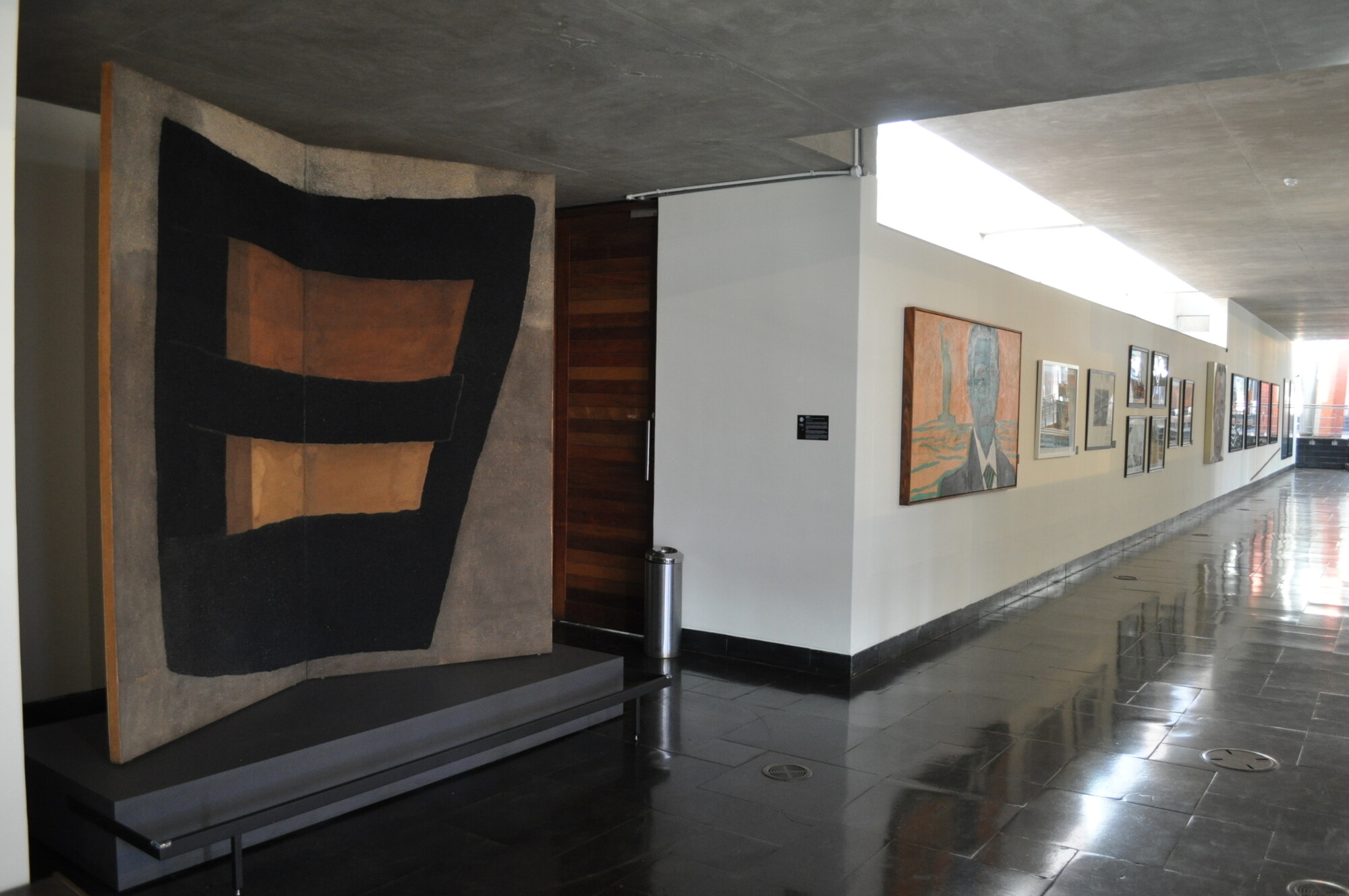
Karel Nel, Cipher (2007)
"Cipher" means an encoded system of writing that most people cannot understand so that messages remain secret. The artwork alludes to early mark-making by humans that, over time, became related to meaning, and subsequently developed into formalised pictograms, hieroglyphics and script. Installed in the photo gallery.
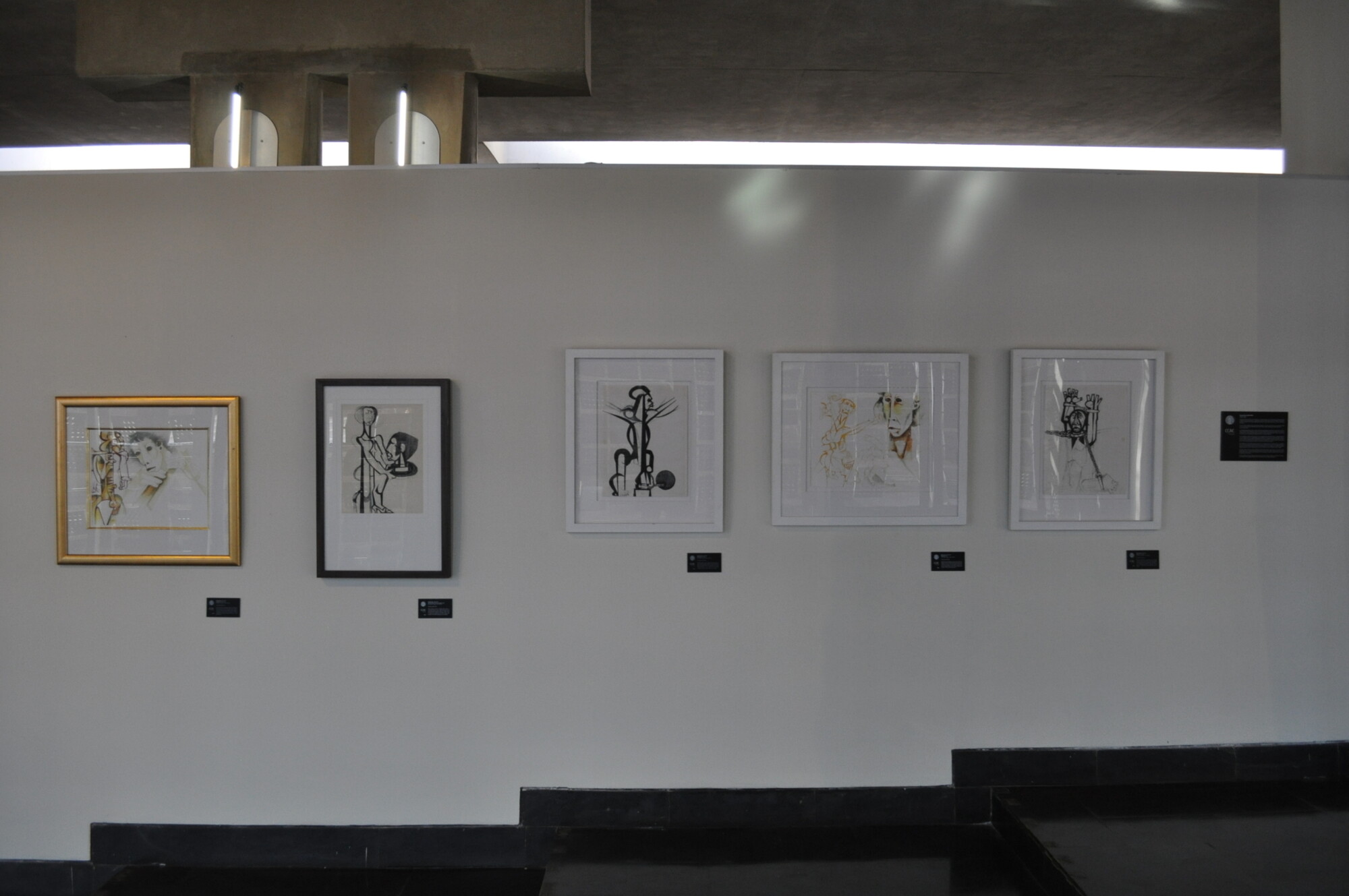
Select works by Dumile Feni (1942-1991)
A theme of Feni's work is often the universal agony of man, rendered specific through his own experience of oppression in South Africa. His figures are frozen in a kind of agonized despair. The artist commented on the intent behind exhibiting some of his work, saying it was "to keep the conscience of the world alive to the issues at stake’. Installed along the Great African Steps.
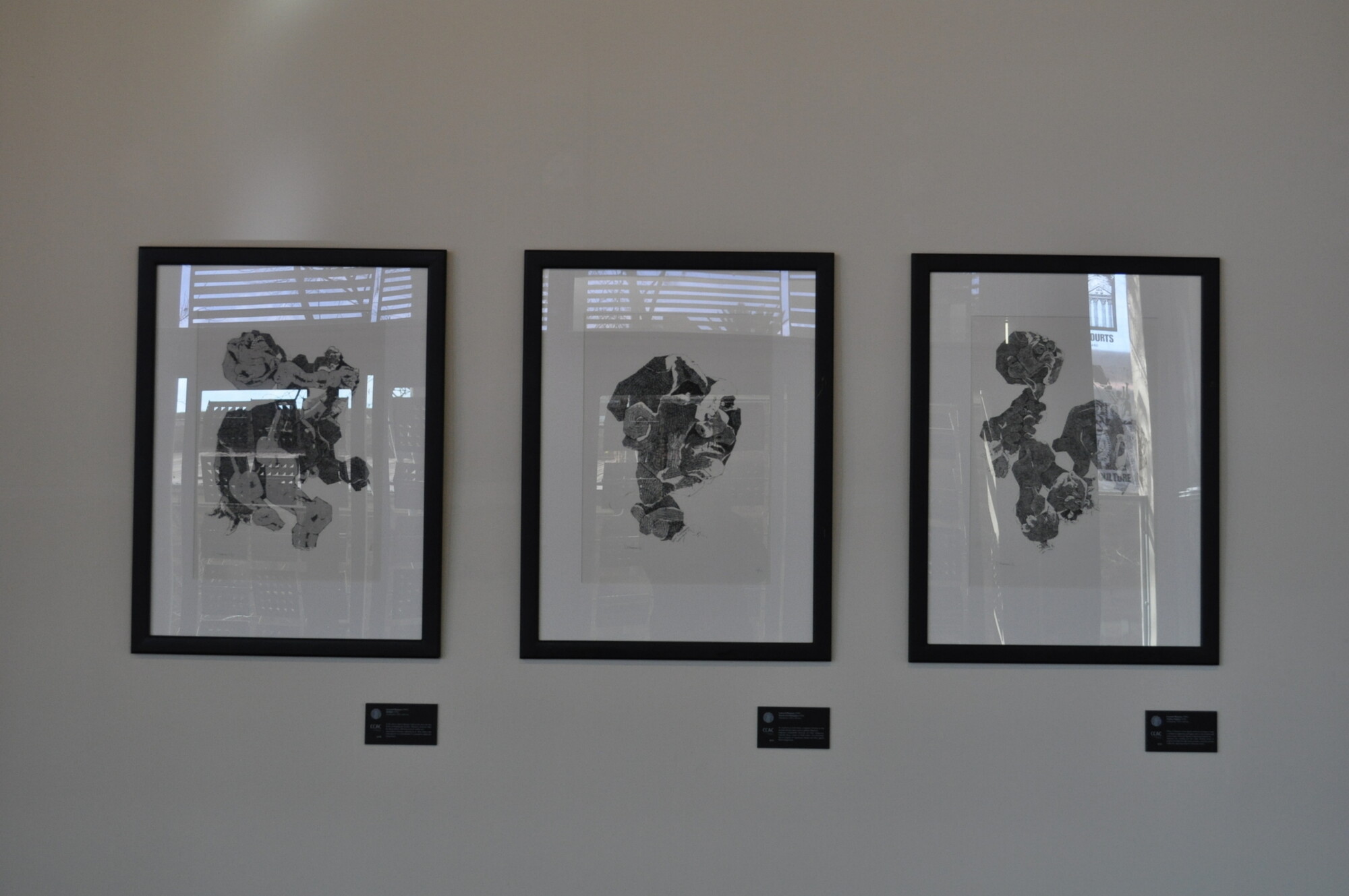
Selected works by Leonard Matsoso (1949-)
Matsoso’s work can often be interpreted as reflecting external conflict and reconciliation between opposing forces. Also visible is the internalisation or embodiment of contestations within the human form. In Matsoso’s work, figures and forms overlap to create a synthesis of opposing archetypes, such as man-woman and man-beast. A graphic sensibility through linear precision and tonal contrast unifies the opposing elements within the whole.
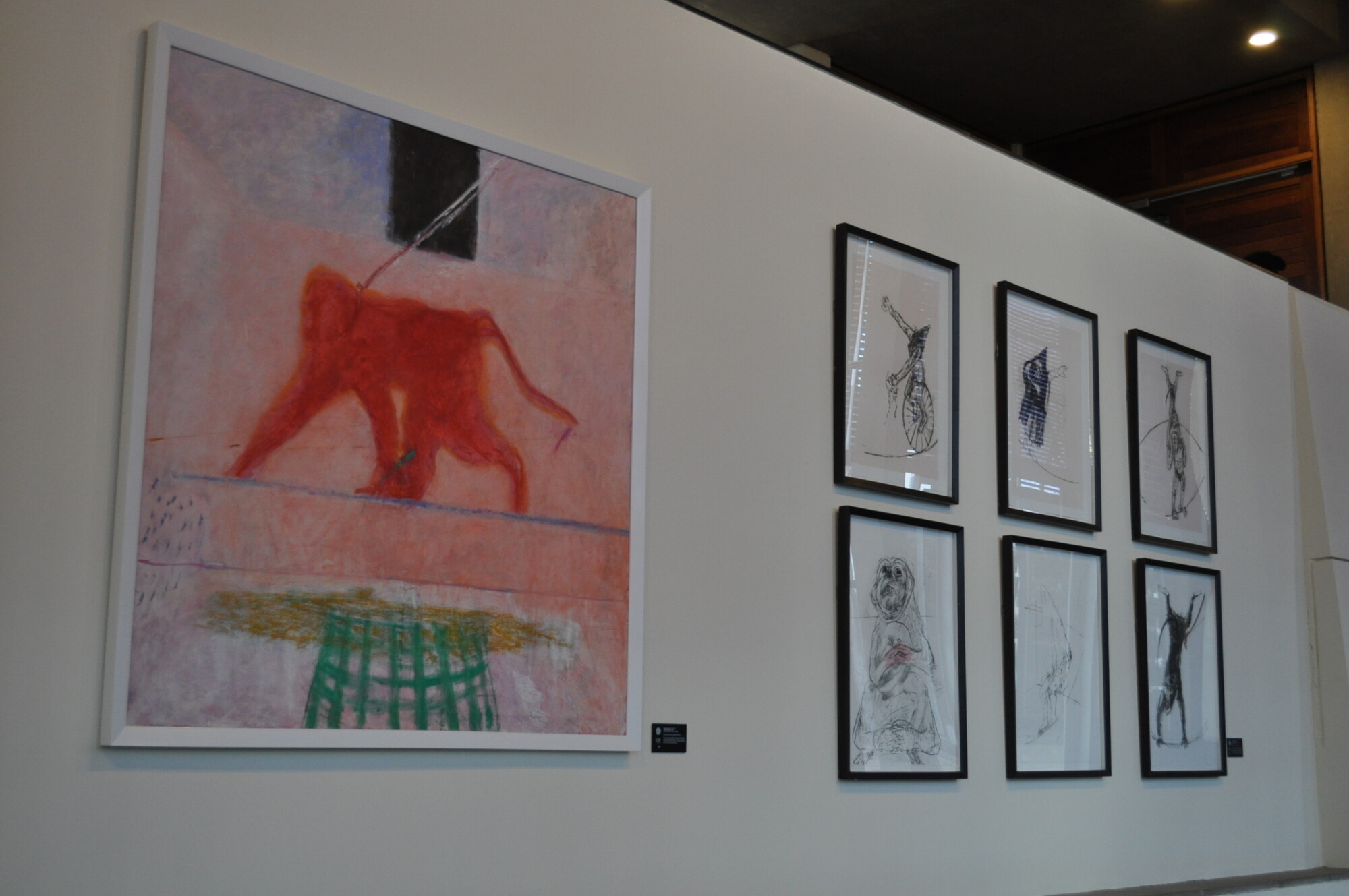
Albert Adams, Tethered Monkey (2005) and his series Circus (2006)
The ape is a recurring motif in the artist’s paintings. It speaks to how man carries his primal nature with him, as well as the inhumanity of apartheid South Africa, as experienced personally by the artist as a gay and coloured man. View from the lower area of the public gallery along the Great African Steps.
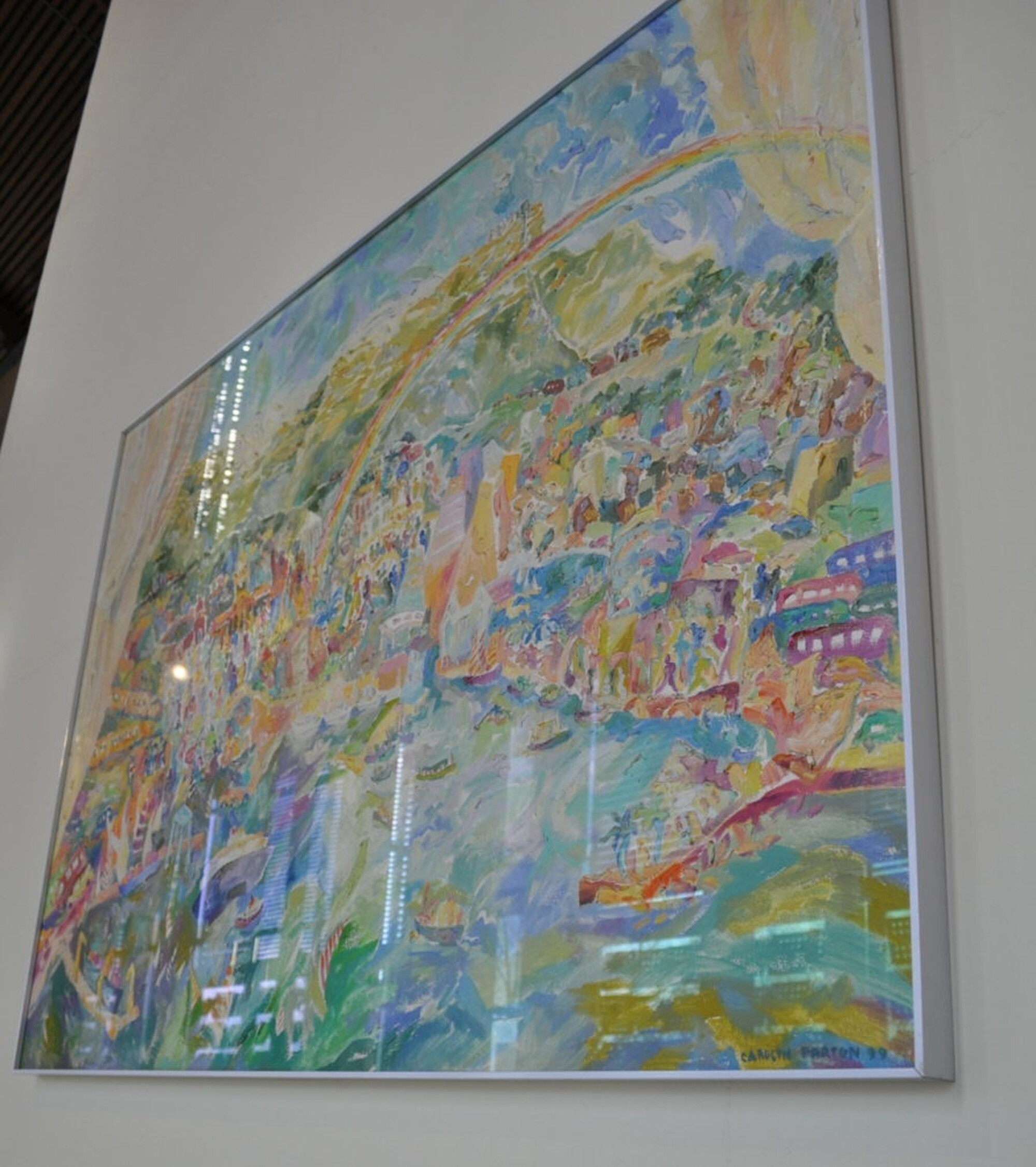
Carolyn Parton, Home (1999)
In an 1899 painting, James Ford imagined how Cape Town might look in 1999. A century later, Parton responded in kind, celebrating the diversity and optimism of Cape town in a newly democratic South Africa in 1999. Tellingly, both paintings feature a rainbow. Installed along the Great African Steps.